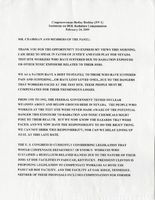Search the Special Collections and Archives Portal
Search Results
Nevada Research Labs Photographs
Identifier
Abstract
The Nevada Research Labs Photographs (1958-1964) include three folders containing aerial photographic prints depicting flood plains in Nevada and the Nevada Test Site.
Archival Collection
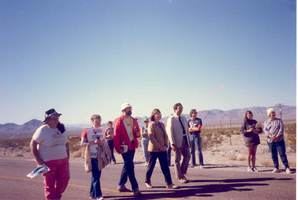
Protestors walk down street with flowers and signs: photographic print
Date
Archival Collection
Description
Image
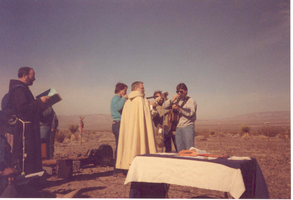
Man in religious robes reads while band sets up: photographic print
Date
Archival Collection
Description
Image
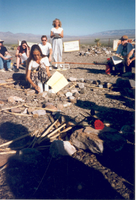
Protestor placing candles in the center of a rock formation: photographic print
Date
Archival Collection
Description
Image

Interview with Melva Jean (Davis) O'Neill, July 2, 2004
Date
Archival Collection
Description
Text
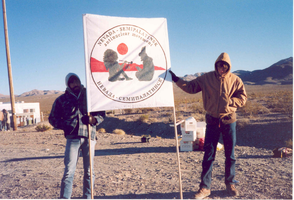
Two unidentified protestors hold a Nevada-Semipalatinsk sign: photographic print
Date
Archival Collection
Description
Image
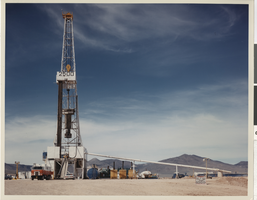
Landscape view of the IDECO 2500: photographic print
Date
Archival Collection
Description
Image

Craig Galati Interview, October 24, 2016: transcript
Date
Archival Collection
Description
always thought I'd be more urban. I would live in a downtown city. I wouldn't have a car. I would walk around. I would work on these big skyscrapers.” At one point in his life, architect Craig Galati dreamt of designing large buildings in some of the nation’s biggest cities. Instead, he was drawn back to his childhood home of Las Vegas, where he created projects meant to preserve the city’s integrity, such as the Grant Sawyer State Office Building and the first building at the College of Southern Nevada Charleston Campus. He speaks to his work in preservation at the Las Vegas Springs Preserve and in welcoming visitors to Mount Charleston with his Spring Mountains Visitor Gateway design. In this interview, Galati talks about his parents’ decision to move from Ohio to Nevada and what it was like growing up in Las Vegas. He recalls his first teenage jobs in the Las Vegas of his youth and his studies in architecture at the University of Idaho. He recounts the dilemma of struggling to find architecture work he enjoyed and how that vision drew him back to Vegas. He describes various projects in his portfolio from his early years to the present. He speaks highly of his partnership with Ray Lucchesi and the basis for their vision: “We wanted to be a place that everybody liked to work for. Buildings were just tools to do something grander. They weren't an object. We had a philosophy that was not object based, it was people based.”
Text

